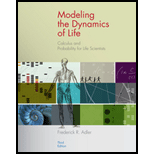
To calculate: The derivative of the inverse of the function,
Answer to Problem 29E
The derivative when inverse is evaluated first then its derivative is
Explanation of Solution
Given information:
The function,
Formula used:
Let a function g is differentiable and has inverse denoted by
Calculation:
Consider the provided function,
First evaluate the inverse of the function,
Let
Rewrite the equation and apply the quadratic formula,
Since, it is provided that domain of the function is
Therefore, inverse of the function is
Next derivative of the inverse evaluated above is, apply the chain rule of differentiation.
Let
Differentiate the individual functions, apply power rule of differentiation
And
Therefore, derivative of
Therefore, derivative when inverse is evaluated first then its derivative is
The derivative of provided function
That is,
It is known that polynomial functions are always differentiable.
Recall if a function g is differentiable and has inverse denoted by
Apply it,
Therefore, the derivative of inverse of function is
Thus, derivative when inverse is evaluated first then its derivative is
Want to see more full solutions like this?
Chapter 2 Solutions
Modeling the Dynamics of Life: Calculus and Probability for Life Scientists
- 12. Determine an equation for the cosine function shown: 2π 凯 Marrow_forward1. Sketch a graph of: y = 2 sin (3x-377) +3. 2 Show your calculations for the transformation of 5 key points OR List all of the transformations.arrow_forward2. Use a compound angle formula to determine the exact value of sin 13π 12arrow_forward
- Pls help asap. Thank you!arrow_forwardII 7. Give an equation for a transformed sine function with an amplitude of 3, a period of 4' and a phase shift of 43 rad to the right. a. b. yol-2(1-1) = 3 sin 7-185(1-5) y 3 sin 8t+ = 8. Solve 2 cos x - 1 = 0 on the interval x = [0,2]. 2元 Π a. X X 3 3 元 b. x = wh 3 x = 5元 3 wy C. y= 3 sin 5 d. y= 3 sin 4x C. X -- 3 3 2元 d. ---- 3 4π 3 Jarrow_forwardPls help asap. Thank you!arrow_forward
- Pls help asap. Thank you!arrow_forwardPls help asap. Thank you!arrow_forward5. Determine the phase shift of the sinusoidal function y = 5 cos [2(x − )] + 3. a. 3 rad to the right b. 3 rad to the left c. π rad to the left d. π rad to the right a. 6. The period of the function y 2元 = sin 2x is b. π C. 1 d. 2arrow_forward

 Elementary Linear Algebra (MindTap Course List)AlgebraISBN:9781305658004Author:Ron LarsonPublisher:Cengage LearningAlgebra & Trigonometry with Analytic GeometryAlgebraISBN:9781133382119Author:SwokowskiPublisher:Cengage
Elementary Linear Algebra (MindTap Course List)AlgebraISBN:9781305658004Author:Ron LarsonPublisher:Cengage LearningAlgebra & Trigonometry with Analytic GeometryAlgebraISBN:9781133382119Author:SwokowskiPublisher:Cengage


